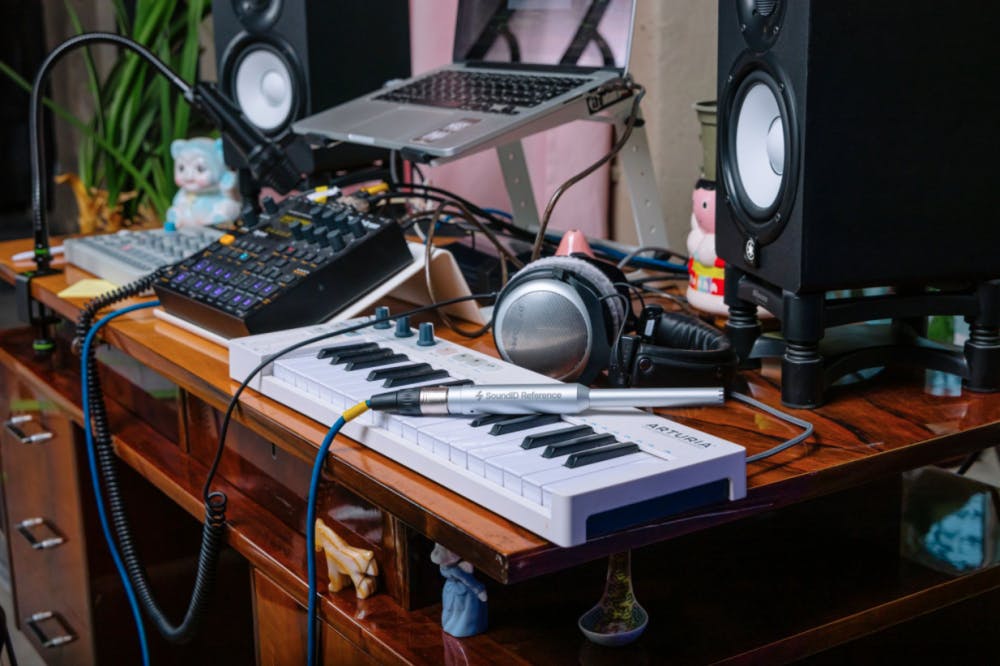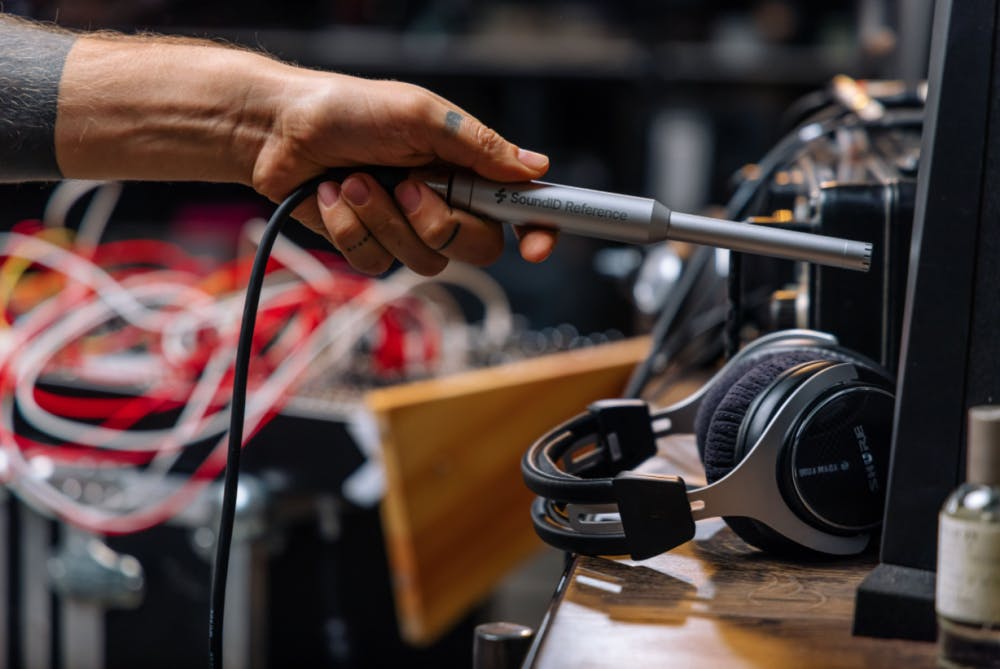I often get asked if electronic room correction or room EQ is necessary for a given studio or listening room. My answer is that a professional tool like SoundID Reference will improve your listening experience. The next topics that come up involve speaker choice, room treatment, and the axiom that “you can’t fix acoustic problems with electronics.” Let me address these issues the way I would discuss this with a client. Don’t worry, the explanations involve no math but will explain why room equalization is effective at improving your listening environment.
First, allow me to present an analogy that everyone can relate to. We can assume that every new automobile can drive safely, comfortably, and efficiently on a reasonable road in decent weather conditions. When we drive on bumpy or slippery roads the comfort and even the safety of our ride will be compromised. A worthwhile improvement would be to upgrade our tires and/or shock absorbers. While stock windshield wipers are fine for most conditions, during severe rain or sleet storms better windshield wipers will provide better visibility than basic or worn-out wipers. Compared to the entire car, tires and windshield wipers represent perhaps one-thousandth of the cost of the car but provide a measurable difference in the experience of driving the car.
When purchasing a studio monitor system, we shop as we do for a car. We want a product that is well made at our desired price-point. We want styling that suits our personal taste and we want confidence in the ability of speakers to produce accurate, enjoyable audio. Like modern autos, most modern modestly-priced speakers perform extremely well, with low distortion and excellent frequency response. Also like cars, speakers interact with the environment in which they are used, and small improvements will yield a noticeable improvement in your experience.

Professional monitors are designed and measured to perform exceptionally well in a perfect environment, like an anechoic room or a free field. A set of monitors placed in your office, garage, or spare bedroom will not perform exactly as they performed in a reflection-free environment. The monitors emit the sound they claim, but the room interacts with the sound and affects what we actually hear. We have a new system that includes the speakers, the room’s acoustics, and the electronics of the entire monitor chain.
Physical Room Correction
Every room and physical setup presents a unique sonic environment and we need to deal with certain acoustic problems to achieve reasonable accuracy out of our monitor system. For instance, the interaction of a(freestanding) speaker with the front wall of the studio will create a dip in frequency response at some relatively low frequency. This particular problem exists to some extent in every room and with every set of monitors. It can only be improved by moving the speakers relative to the front wall and by proper application of acoustic treatment. No amount of EQ will fix this “bass suckout” problem because no matter how much energy you add at the problem frequency, the room dimensions and speaker placement will still provide the same amount of cancellation.
Other acoustic issues, like first reflections, proper listening position, and speaker-listener geometry also need to be taken care of in the physical realm. Move your chair, angle the speakers properly, and place absorbers and diffusers in the necessary positions. Too little bass trapping allows low frequencies to ring, or last longer than they should, which will smear the clarity of the low-end of your mixes. Proper setup and acoustic treatment minimize the effect that the room has on the sound of our monitors.
Once the speakers and room are set up properly and optimized as much as is practical, there may still be some unevenness in the frequency response of the monitors. So far we’ve done the best we can—returning to our analogy we have the best car we can afford. The existing problems may relate to the design of the speaker or other electronics in our monitor chain, along with some remaining acoustic properties in our listening environment, like having too much high-frequency absorption around our listening position (placed there to kill first reflections).
Electronic Room Correction
Electronic room correction now comes into play to add the finishing touches that really polish the sound of the system. Like upgraded windshield wipers and better tires, several small EQ corrections to the response of your system add up to a much-improved listening experience. Below are some of the improvements that you can expect with room correction software, like SoundID Reference.
SoundID Reference software measures the frequency response of your system at thousands of frequencies—not like your grandfather’s ⅓ octave analyzer—and can create thousands of tiny adjustments that correct the frequency response variations of speaker drivers, crossovers, and even small variations in room acoustics. SoundID Reference even provides the user with the ability to optimize the plugin for lowest-latency or the most accurate EQ correction.

Every electronic component inside your audio gear has a specific performance tolerance and if we have ten components, each with a 5% tolerance, the variation from the ideal can be quite noticeable. SoundID Reference will measure and adjust for the real-world performance of your entire monitor chain. This results in excellent stereo imaging and soundstage reproduction.
SoundID Reference further improves the stereo image by correcting the timing and volume differences between your listening position and the left and right speakers down to the hundredth of a millisecond and a tenth of a dB for each channel. Beyond the accuracy of a tape measure and a volume knob, this alignment will solidify your center image and highlight the stereo placement of panned sounds.
As we mentioned earlier, the position of your speakers relative to the front wall will create a dip in certain low frequencies of our bass. This phenomenon is referred to as speaker boundary interference response or SBIR. While room EQ can’t solve bass suckout caused by SBIR, SoundID Reference can effectively tame peaks in the room’s bass response, and lowering these peaks will help flatten out the bass response.
Keep in mind, also, that our studio spaces are constantly changing environments. We might get a new sofa or new window treatments. We might add an extra chair or a new rack of equipment. You might finally set up that gigantic modular analog synth. Besides these obvious physical changes, you may change your monitor controller, interface or even the audio cables to your monitors. All these tiny changes add up to real differences in what we hear. Wear and tear on your monitors is also to be expected, especially if you play your music loud. Speakers break in and break down and even electronic components in amplifiers and crossovers will age and start coloring your sound. Our brain gets used to changes that happen gradually so we may not notice changes in our system’s performance.
I recommend that you measure your room every three to four months and measure again whenever you make changes to your room’s layout, gear, or furnishings. Fresh measurements may look very close to the old measurements, but several tiny changes add up to a noticeable sonic difference!
Keep It In Perspective
Ultimately the most important thing about our room is what the audio sounds like. Room correction, like SoundID Reference, provides more than enough polish and improvement to a monitor system to justify its cost and the time it takes to learn about it. Clean the windows to your sonic world and you’ll hear what’s really going on!
Additional Reading:
Set Your Studio Monitors Up the Right Way



